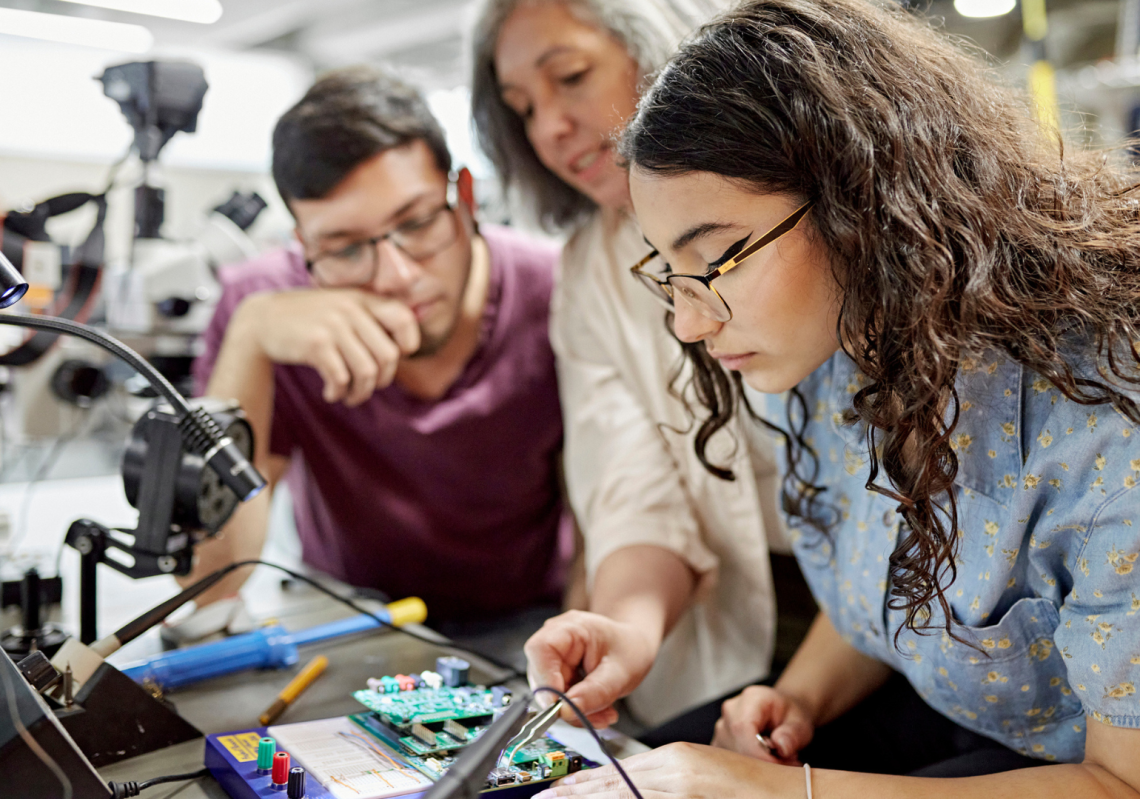Failing to engage the diverse range of students that can enrich engineering will only harm the profession. The iSTEM program aims to turn this around.
Many of the engineering jobs of the future haven’t yet been imagined.
Advances in areas such as robotics and quantum computing, along with the pressing need to innovate solutions to climate change and clean energy, present bold new challenges for the engineers of tomorrow. This represents a unique challenge for engineering educators.
The message for students is that engineering is a creative and collaborative profession, one geared to solving complex problems with profound impact on communities and economies. This necessitates debunking the commonly held myth that engineering is narrowly related to infrastructure and construction.
That myth is a catch 22 that reduces the talent pool by failing to engage the diverse range of students that can enrich the profession and free up the profession’s talent pipeline.
Results to show
Professor Scott Sleap, Professor of Practice – STEM at the University of Sydney, had the idea of translating engineering’s exciting potential to a high school classroom setting when he collaboratively developed the iSTEM program in 2017.
Developed with the help of universities, industry players such as Engineers Australia, and experts in various STEM disciplines in the school system, iSTEM was designed to tap directly into students’ interests. The NSW Education Department-approved elective for years 9 and 10 sees student teams working collaboratively to solve real-world problems via an engineering design process.
The program has achieved some exciting results.
iSTEM has seen students working with the Australian Space Agency and the Aldrin Family Foundation in the US to develop projects. An experiment devised by students from Western Sydney with the help of the Powerhouse Museum, looking at the growth of algae in space as a potential fast-growing food source, will take place on the International Space Station later this year.
“Space is an area that’s non-gendered,” Sleap, who still coordinates various aspects of the program, told create. “A study in the US showed 94 per cent of students there have a positive view of space.”

A Hunter Valley-based team pursuing a project in FIRST Robotics designed a new wheelchair-friendly checkout that piqued the interest of Woolworths, which has started working with the students. Another group looking at biodegradable outcomes for milk cartons presented their design of a biodegradable casing inside milk cartons to Pitch for the Plant, while a new agritech unit looking at the use of technology to improve food production coalesces with a significant number of iSTEM schools being regional and rural.
“We also worked with the cybersecurity industry to develop Australia’s first cybersecurity course specifically designed for developing professionals in that area. It’s been really popular. It has also really piqued the interest of students knowing there are a lot of jobs available in this area.”
Ease of use
An advantage of iSTEM lies in its easy adaptability. A NSW Department of Education approved elective, it can be modified and adapted to whatever industries existed in the regions the students were coming from. The course can also be updated readily; currently, it updates approximately every two years, which ensures the content is relevant.
An advanced manufacturing unit is one of a number of curriculum innovations in the pipeline.
“It’s very much based around Industry 4.0, the next industrial revolution,” Sleap said. “It’s all about systems approaches to technology, using AI and robotics, automated systems and computers talking to computers. That is really contemporary and in step with where industry is going.”
Another emerging area involves quantum technologies and computing.
“Quantum computing is a growth area that will lead to advances in artificial intelligence,” Sleap said. “Australia is one of the leading countries in quantum, but the problem is that students don’t necessarily know about these jobs. A big part of iSTEM is to make them aware of careers. It’s not a careers course, but it’s a course that includes careers so if you enjoy what you’re doing you can find out about the opportunities and the pathways that exist to get there.”
The proof for the efficacy of such an initiative is already evident. iSTEM saw a 19.22 per cent increase in STEM subject enrolment in the Hunter Valley trial by its participants across a period of five years. To date, more than 14,000 students have completed the course and it has been taught in approximately 320 NSW schools.
One of its flow-on effects is its active nurturing of leadership skills in participants, which might see iSTEM students share their skills by helping primary students explore subjects such as robotics and digital tech.
“The most important thing iSTEM does is develop the non-technical skills base – problem-solving, creativity, teamwork, negotiation and leadership. We encourage students to work with other students to solve problems. We’re seeing improvements in literacy and numeracy and better traction.”
When students are exposed to these subjects, they become interested in following them up as a career.
“It may sound obvious, but without having these opportunities and modules within schools, they wouldn’t become exposed to the opportunity … It’s all to do with saying that you can’t be what you can’t see.”



